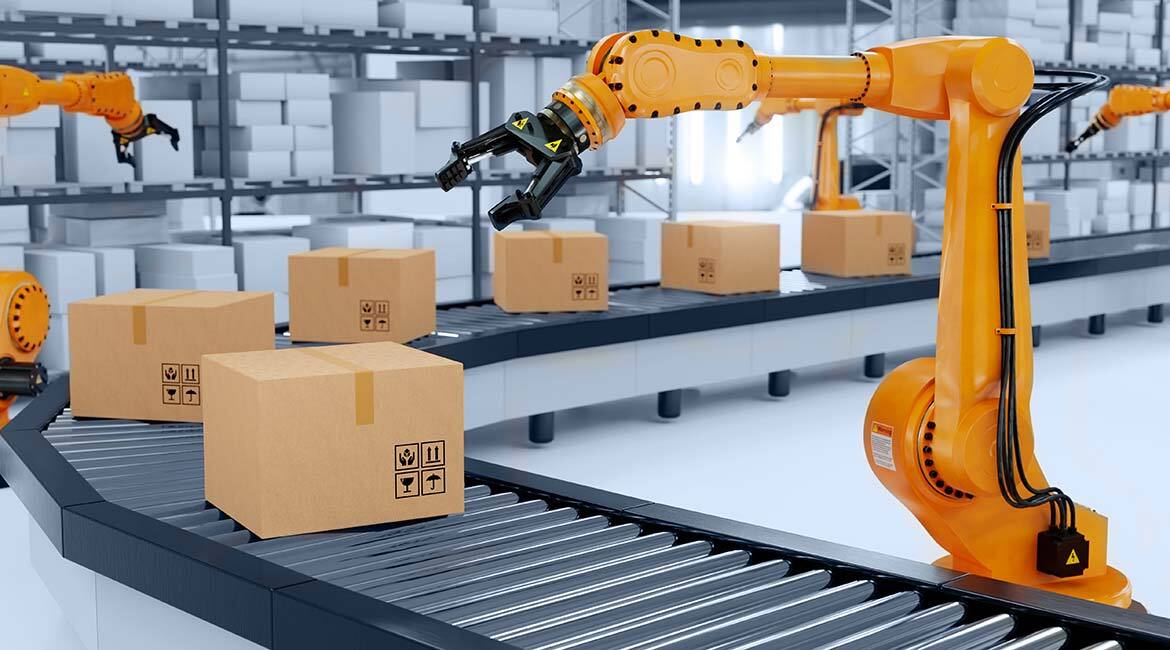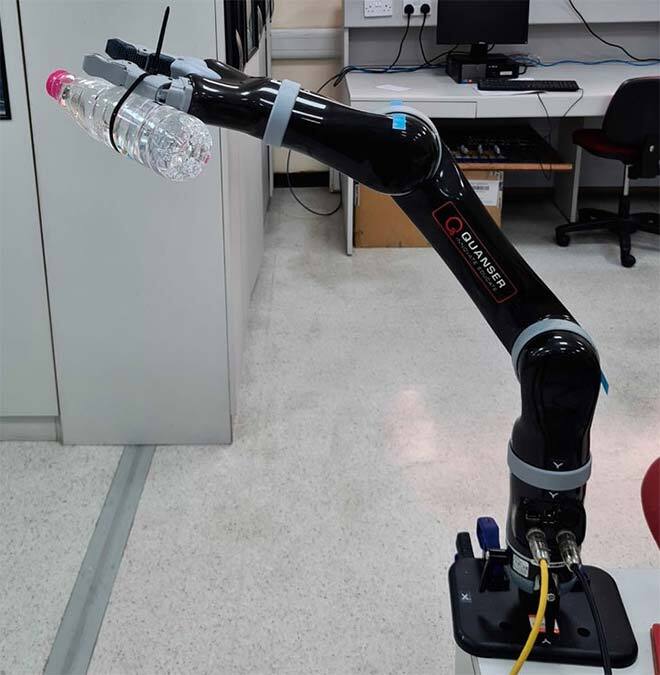Nonlinear Controller for Robot Manipulators with Noisy Measurements

Purchased from Gettyimages. Copyright.
This research focuses on the need to provide a control scheme that can tolerate multiple robotic control challenges related to noisy measurements, unknown disturbances and uncertainties using only joint position measurements. The structure of the proposed control scheme consists of two parts: the first is an Extended State Observer (ESO) to estimate the joint velocities and the total uncertainties while ensuring immunity to measurement noise in the output feedback, and the second is a nonlinear controller known as synergetic control to guarantee that the robot performs the desired task by ensuring that each joint is following its respective known defined trajectory. Keywords: Robot manipulators, state observers, extended state observers, nonlinear control, and synergetic control.
Factors of Disturbances and Uncertainties
This research aims to find a practical solution to control robot manipulators that have noisy sensor measurements and are subject to external disturbances and uncertainties. In practice, sensor measurements are always subject to noise. This noise comes from random fluctuations or inaccuracies in the measured values. Uncertainties refer to imprecisions and lack of predictability of elements like the mass of a carried object and actuator uncertainty. This is because the mass of the object carried by the manipulator is not always known. Also, actuators (motors) may exhibit variations in performance due to factors like wear and tear, manufacturing tolerances, and changes in operating conditions. These uncertainties can affect the accuracy of the robot’s movements and manipulation.
Mathematical Challenges Posed by Disturbances
One of the key challenges is to formulate a precise mathematical description of these disturbances to allow compensation by control algorithms. These external disturbances manifest as external forces applied to the robot as it moves. Addressing the impact of this problem on control strategies is complex due to the unpredictable nature and lack of a straightforward mathematical model for their behavior.
Many robotic systems use the angular positions of their actuators to derive angular velocities. Angular positions and velocities are fundamental concepts in robotics, playing a crucial role in controlling the motion and behavior of robotic manipulators. However, the derivative of sensor measurements can propagate errors due to the sensitivity of differentiation to variations in input data. This phenomenon is often referred to as error propagation or error amplification. To avoid cluttering the system with other expensive sensors, the best way to obtain the velocity is to estimate its value through certain observers or by designing certain types of filters.
Extended State Observer
The Extended State Observer (ESO) is a type of observer used in control systems to estimate both internal dynamics and external disturbances. Its distinctive capability lies in combining all sources of uncertainty, unmodeled nonlinearities, and disturbances into a single comprehensive control term. This estimated term is then subject to regulation by a feedback controller, enhancing the system’s capacity to effectively manage and mitigate these challenging factors. Synergetic control is an advanced nonlinear optimal control strategy renowned for its robustness, making it highly compatible with digital control environments.
Thus, the fusion of synergetic control and Extended State Observer (ESO) promises to produce a powerful control scheme, positioned as a robust solution to overcome many control issues in robotics.
The overall system is illustrated in Figure 1. The values for the desired angles


The performance of the proposed control scheme (ESO-based synergetic control) was experimentally tested against the conventional synergetic control, considering three different case studies. The third case represented the greatest challenge: the desired shape changes from circular to conical. Additionally, in this case, the robot was subjected to external disturbance and extra weight, as shown in Figure 2.
In the experimental results, the term (Synr) is used to describe the performance of the conventional synergetic control, while the term (Synr-ESO) is used to describe the performance of the ESO-based synergetic control. Figure 3 shows that the torque applied by the (Synr-ESO) is lower compared to the (Synr). In robotic systems it is always preferable to apply less torque to achieve the desired movement.
The joint-space tracking error in Figure 4 shows that the (Synr-ESO) provides a better transient response with respect to (q1 ) and (q2), and better tracking with respect to (q2) and (q3). Specifically, for (q3) the tracking performance for the (Synr) is oscillating, making the robotic arm vibrate while drawing the desired shape. This behavior can damage the mechanical parts of the manipulator.
The same behavior occurs with workspace tracking in Figure 5, making the robot unable to draw the cone shape correctly compared to the (Synr-ESO) controller.
Conclusion
Experimental results reveal the superiority of the ESO-based synergetic control in overcoming uncertainties and disturbances without the need for full access to the robot dynamics and states, where only joint position measurements are used. Thus, the proposed control scheme could be a suitable solution for systems that suffer from inaccurate measurements and imperfect modeling. Simultaneously, it manages to preserve the foundational merits of synergetic control and effectively mitigate its inherent constraint of heavy dependence on model dynamics and the need for complete access to system states.








